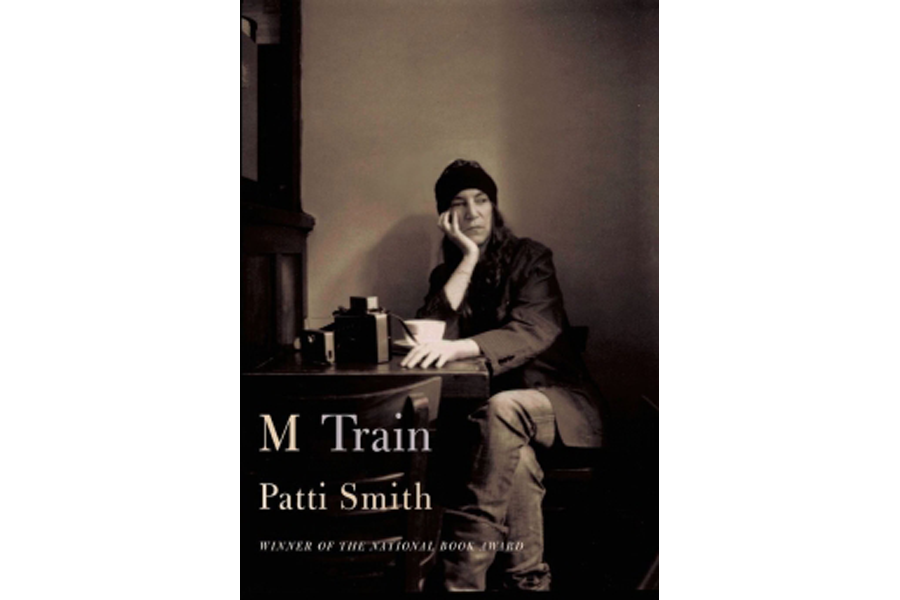‘M Train’ follows Patti Smith as she slips beguilingly between present and past
Loading...
When she was a kid, teachers would scold Patti Smith for not paying attention. Talk about missing the big picture. Then as now, the punk rock pioneer soaks up the world around her in remarkable and eccentric ways.
Smith created a masterpiece of memoir in 2010’s perceptive and haunting “Just Kids,” which chronicles her relationship with the photographer Robert Mapplethorpe, one of the 20th century’s most controversial artists. Smith’s gentleness shines through her tales of starving artists, creative chaos, and endless transition in 1960s and 1970s New York City.
Her new memoir, the ethereal M Train, is a very different kind of book. While it does venture into the past, it’s mostly full of vignettes about how Smith – now nearing 70 – seeks both comfort and complexity in the present.
Once a muse, now she muses: “I believe in movement. I believe in that lighthearted balloon, the world.” Once an icon of alternative culture, she now loves to sit in anonymity at her favorite Greenwich Village coffeehouse, slipping one day “into a light yet lingering malaise. Not a depression, more like a fascination for melancholia, which I turn in my hand as if it were a small planet, staked in shadow, impossibly blue.”
When she’s not traveling the world to sing and perform, she binge-watches crime dramas with her cats at home. Readers get to hear all about her favorite TV characters and novels in addition to Smith-ian minutiae like feline digestive unpleasantness, piles of junk mail, and a rubber fishing lure named Curly.
Just about any other memoirist this obsessed with detail and fuzzy philosophy would risk a bad case of book-hurled-against-wall syndrome. But Smith is so charming and non-pretentious, so full of genuine delight, that her rambles carry more than their weight in words.
A typewriter, an obsolete word processor, and her late brother’s Navy flag keep her company in her room, where she works from bed, “an optimistic zombie propped up by pillows.” She can’t throw away the debris of a writer, “the scores of notebooks, their contents calling – confession, revelation, endless variations of the same paragraph – and piles of napkins screwed with incomprehensible rants.”
Even the discovery of Curly the lure, “like a Juicy Fruit or a Swedish fish,” lightens her heart because it reminds her of a long-ago love: “My little lure! How could I have forgotten our hours of sweet divination? How well he served me when cast into unfathomable waters; performing his persuasive tango with slippery bass.”
If that humanizing a lure sounds a bit peculiar, there’s plenty more where that came from, enough to turn readers into walking “get a load of this Patti Smith tidbit” machines.
She talks to her TV remote control, and it talks back (as is the wont of remote controls) with haughty attitude. She sings Buddy Holly songs with a paranoid, ranting chess master Bobby Fischer. And she’s one of the few members of the CDC. No, not the disease agency in Atlanta. This is the Continental Drift Club, a tiny (27-member) international society devoted to remembering the late explorer who developed the theory of continental drift. She stumbled into a membership when she sought to photograph the scientist’s boots.
After a while, patient readers will come across these kinds of anecdotes and simply smile and nod knowingly to themselves. Of course this or that bizarre thing happened to her. Why wouldn’t it?
Several of Smith’s photos appear in the book, and they’re often surprisingly blurry and plain, utterly unlike the woman who created them. Thanks to “M Train,” we can see her clearly: A woman who refreshingly doesn’t speak in our era’s languages of snark, irony, and one-upmanship. Thankfully, she’s no angel either. She’s still able to wish a violent end, TV crime show-style, for a loud woman who dares to occupy her coffeehouse seat.
Smith is missing more than an off-putting sense of superiority. While she’s a veteran of punk rock, a musical genre smitten with rage, she doesn’t appear to have a reservoir of anger or bitterness.
She’s hardly forgotten the losses in her life including recent ones from Superstorm Sandy, and they’re peppered throughout “M Train.” But Smith moves forward, her edges blurred, ever delighted to see what’s now and what’s next: “We seek to stay present, even as the ghosts draw us away.”








